Nothing is more heart wrenching than waiting four to five months for your pepper plants to bloom, to only be met with a few, sad looking peppers. It’s the last thing you want to see after all the months of effort you’ve spent on growing and nurturing the plants. Pepper plants are generally high yielding plants, so as long as you keep these 12 tips in mind, you should be rewarded with healthy and high yielding pepper plants!
To get bigger and better yields from pepper plants, start planting seeds early. The best time is 10-12 weeks before the last spring frost. Other important factors to keep in mind include proper amounts of water, airflow, light, fertilizer, and heat, as well as proper pruning and hardening.
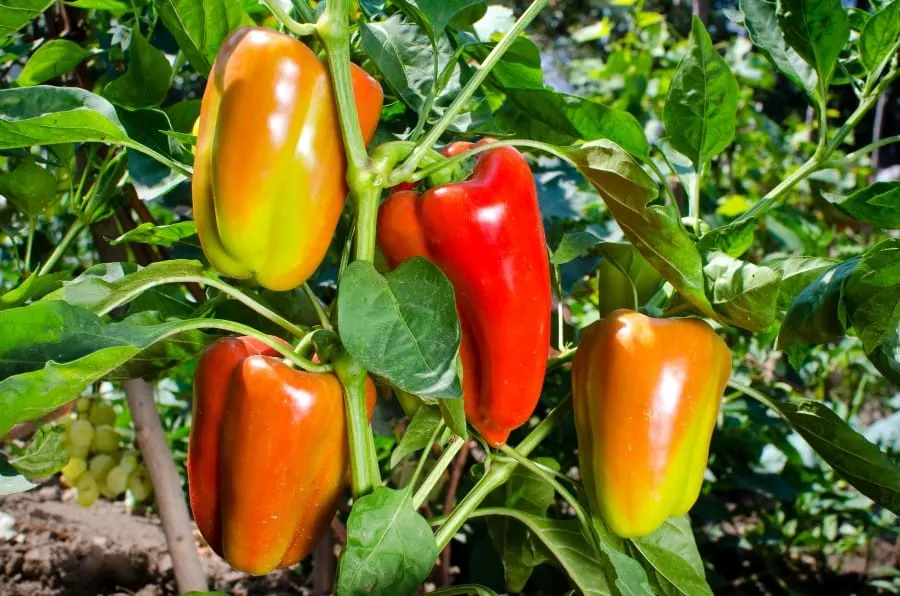
Throughout this article, we’ll elaborate on how to increase your pepper yield. We’ll tell you what time of year is best for planting and how to plant, water, fertilize, and transplant your pepper seedlings. We’ll also talk about how to prune and harden your plants to get the most out of them.
Start Seeding at the Right Time of Year
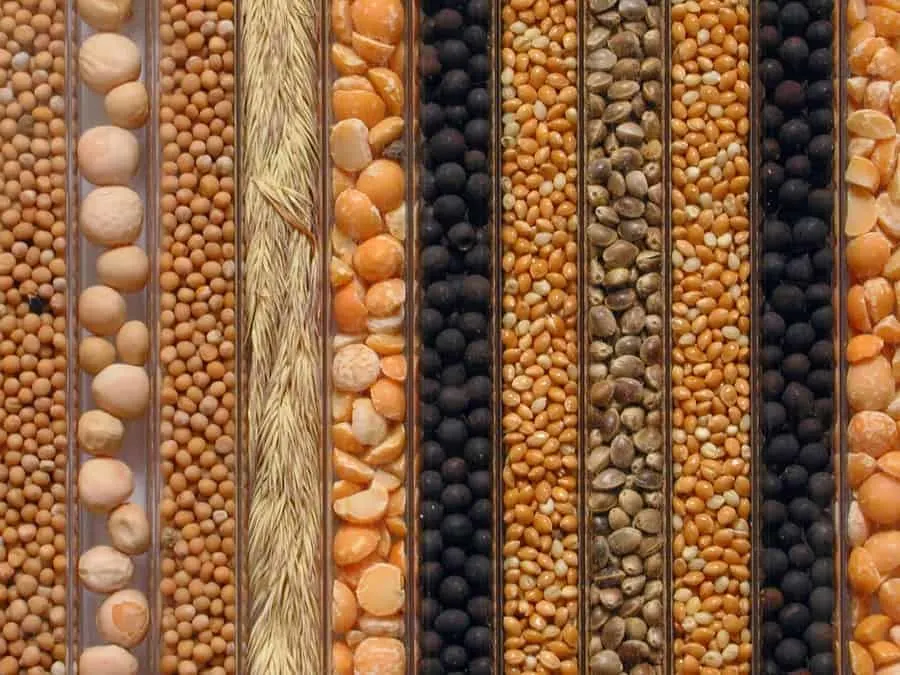
Timing is an essential factor in growing peppers. Unlike other plants, peppers need more time to germinate, generally between two to three weeks. Some varieties of peppers germinate faster than others like Jalapeños, while others like Carolina Reapers can take up to a month.
So, start planting pepper seeds earlier than other plants in your garden. It’s best to begin seeding pepper plants around 10 to 12 weeks before your region’s last spring frost. The exact date depends on your hardiness zone, but it normally falls between November to February if you are based in the U.S.
You should then give your pepper plants two months to get mature enough so you can transfer them outdoors. By that time, the weather should be warm enough for the peppers to thrive outside.
The best thing about planting peppers is that they can germinate without any special preparation. This makes them easy to grow, so you don’t need cold stratification, nicking, or soaking. All you need to do is wait for the perfect date to plant them in the containers.
If you want to get the highest germination rates and the strongest seedlings, we recommend reading our post on the topic.
Picking the Right Size Containers at the Right Stage
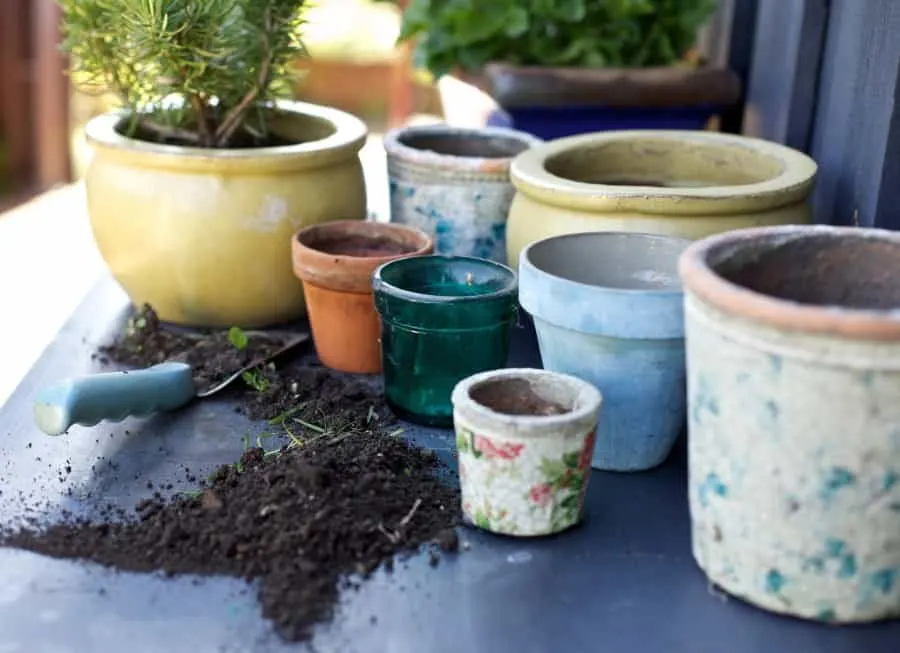
Peppers need plenty of space to grow roots and thrive. Seed flats provide more space to sow seeds while taking up less room, and you could also place them on a heating mat to give the seeds a consistent and ideal soil temperature.
A seed flat with 20 rows is ideal with its shallow channels that allow you to plant different varieties while keeping them separated.
Another important factor is planting depth. If you plant the seeds too deeply, they may not sprout, and seeds planted at shallow depths could dry out before having the chance to germinate. Plant the seeds ¼ inch (6.35 mms) deep into the seed-starting mix. After two weeks, when the seeds start to sprout and the first two leaves—called seed leaves—appear, it’s time to transfer them to cell trays.
Here again, it is important to choose the right cell size. The cell needs to be small enough so that the plant will have a nice root ball that you can easily transplant outside. However, it shouldn’t be so small that the plants become root bound. If your plant is oversized and root bound, you will get a smaller crop size because the pepper plant will get stressed when you transplant it outside.
If you want to minimize the space used for cultivating your peppers in the early stages a 50-cell or 72-cell tray provides the ideal space for your plant’s growth until it’s ready for transplant.
If the seedlings are outgrowing the cells, consider transferring them to pots. This way, you’ll give them room to grow without making them root bound.
You can either use plantable pots, which make transplanting in the garden easier, or plastic or foam pots, which are reusable and environmentally friendly. You could also use recycled yogurt or ice-cream cups and make holes in the bottom to provide an outlet for drainage.
The right size container needed will vary depending on the pepper you are growing. A small 3-gallon container can grow small, hot chili peppers, while a large 5-gallon container can grow bell peppers. A medium-sized container will let you grow some medium-sized chilis, like Habaneros or Jalapeños.
Start Growing Pepper Plants Indoors
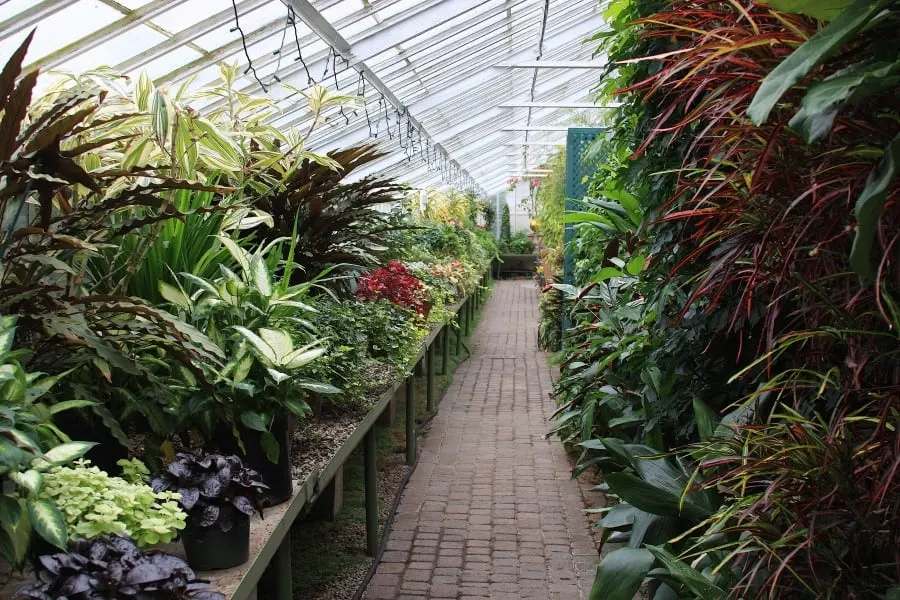
Peppers thrive in higher temperatures since they’re tropical plants that originate from hot regions, but because the perfect seeding time is in the winter, you should first sow the seeds indoors where temperatures are milder.
The best temperature for pepper seedlings is between 60 – 90 degrees Fahrenheit (16 – 32 degrees Celsius). If you plant them outside these temperature ranges, you might get a reasonable crop, but you most likely won’t get a high yield.
Most beginners underestimate the importance of air circulation. If a pepper plants doesn’t have enough airflow, they could get fungal diseases which will prevent strong stems from growing. While your pepper plants are indoors, set a fan at a low-speed setting in front of the plants for two hours in the morning and two hours at night.
However, don’t put it too close to the plants. The fan should be placed far enough to gently shake the seedlings’ tops, while not blowing the plants over.
Harden Off the Pepper Plants
Before you can transplant the seedlings into the garden, you want to harden them off to prepare them for outdoor life. They have been living pretty sheltered lives indoors, so they’re not used to rain, direct sunlight, or wind.
After seven to eight weeks, the seedlings should be around six to eight inches (15.2 to 20.3 cms) tall. If they already have buds, it means they’re in great condition, but it’s still early to have open flowers. Before hardening the seedlings off, make sure to plant them in pots if you haven’t done so already.
To get a bigger crop size, you need to harden off your seedlings one week before transplanting them. During this week, reduce the day temperatures to 60 – 65 degrees Fahrenheit (16-18 degrees Celsius).
You might also consider keeping the plants outside for a couple of hours every day. The best time to do this is when the outside temperature during the day is between 60 and 70 degrees Fahrenheit (16 and 21 degrees Celsius). Make sure to put them in the shade first, and after three or four days, move them in the sun for a little while. Increase the time they spend outside every day so that they get used to outdoor conditions.
The first day is critical, so go easy and slow. Putting the plants in direct sun will damage the young leaves and set the plants back. To minimize the impact of harsh weather in the first few days, water them adequately before placing them outside.
They can stay outside as long as the weather is pleasant. The plant’s overall condition determines how long you can keep them outside. Check them frequently and bring them in if you see signs of distress or wilting.
Pepper plants normally take a week or two until getting hardened off completely. After that, they can tolerate rain, soft winds, and direct sun, but cold winds can damage them even after they have hardened.
When you put them outside, keep an eye out for pets such as mice and rabbits, who love eating their tender leaves.
Transplant the Pepper Plant into the Ground Correctly
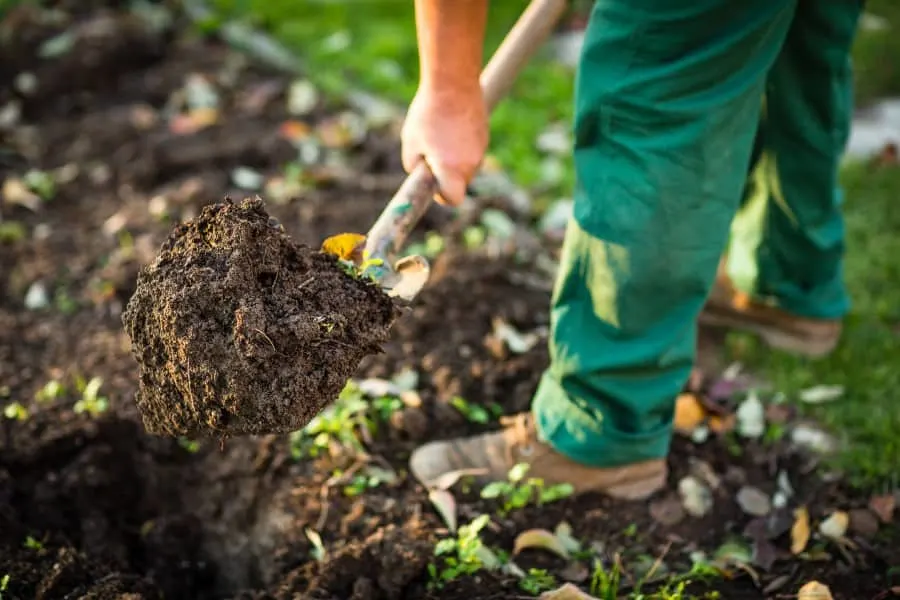
It’s important to take your time when transplanting your pepper plants outdoors. Keep in mind that pepper plants hate the cold and will die if you take them out too early. In some cases, they might still survive in the cold, but they will likely give you smaller yields. So, it is important to wait until the weather is warm enough and there is no chance of frosty conditions before you move your pepper plants outside.
When the average nightly temperatures by you reach 60 degrees Fahrenheit (16 degrees Celsius), you can begin the transplanting process. For best results, try choosing a cloudy day, so that your pepper plant won’t be shocked by direct sunlight on its first day outside. You can plant them in the garden, greenhouse, or hoop house. They also thrive in pots and containers placed in patios or deck planters, where they can get plenty of sunlight.
Ensure the soil is rich in phosphorus, calcium and lots of organic matter to get better yields. Organic granular fertilizers, compost, or worm castings are ideal for providing the nutrients. Pepper plants need fertilizers regularly throughout the growing season. We’ll discuss pepper plants’ fertilizer needs later in this post.
Use a garden fork to loosen the garden soil two weeks before the final frost. This way, you’ll allow the soil to develop micro-organisms and recover and improve aeration and drainage before planting. You should also test the pH level of your soil and make sure that it has a pH of 6.5. You can check out this post for more information about what components make the best soil for pepper plant growing.
To make the plants grow stronger and have better yields, place the plants deeper than the root ball. This way, they grow additional roots and become sturdier.
As a rule of thumb, the bigger the species, the more space the plants need, so ensure that your plants have plenty of space to grow their roots in but are not too far from each other. Pepper plants love to touch each other when they grow and can perform well when staying compact. Generally, 12 to 20 inches (30.5 to 76.2 cm) is enough space between the seedlings.
For taller varieties, stake or cage them to prevent the plants’ stems from breaking in the event of strong winds or due to heavy crop loads.
Water the Plants Properly
When growing peppers, you don’t have to adhere to a strict watering schedule. In fact, doing so can be bad for your plants, as you will more than likely end up over- or underwatering them. Instead of trying to keep up with a set schedule, check your plants both visually and physically to determine whether they need water or not.
The best way to determine whether your pepper plant is “thirsty” or not is by sticking your finger an inch deep into the soil. If the soil is damp, do not water it. That would be far too much water, and you put the plant at risk of root rot. Let the soil dry out a bit before topping it off, as too much water can turn the lush green color of the plants to yellow.
Checking your plant before watering will prevent you from drowning your plant in too much water and will also help you to determine when your plant might need more water, especially during hotter months.
A thick layer of mulch can help retain moisture. However, make sure to mulch your soil when it’s warm because if the soil is cool, it will remain cool and suppress the plants’ growth. Using a drip irrigation system is also a good option for outdoor, in-ground plants, to ensure they get the right amount of water.
Provide the Right Amount of Light
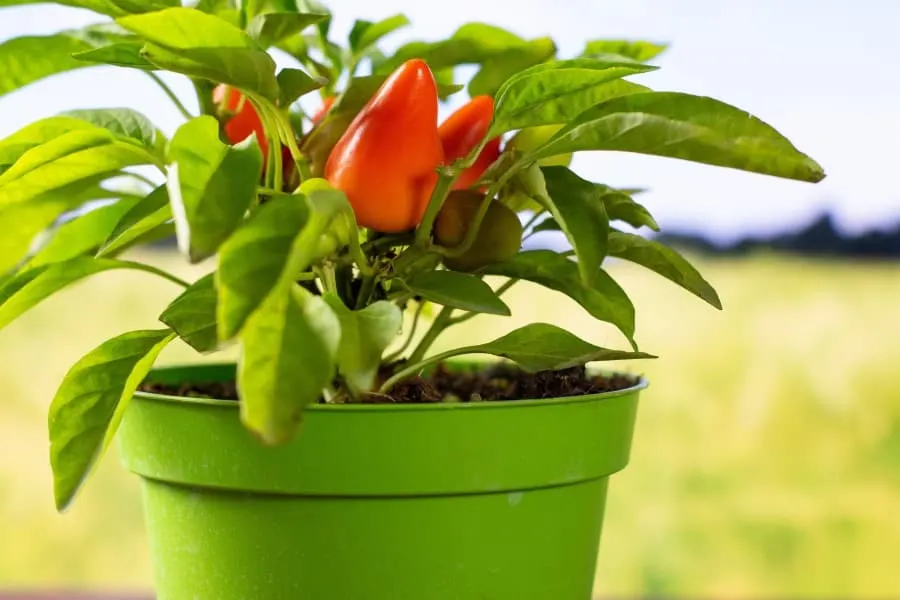
Make sure your plants have full sun when you transplant them. The more they’re exposed to light, the higher your yields. If they’re not under direct sunlight or other plants cover them, they won’t produce the biggest crops.
When they’re indoors, if the sunlight from outside isn’t enough, you might consider using grow lights. LED lights are ideal as they don’t produce as much excess heat. Put the plants under the LED light for 16 hours a day to grow stronger pepper plants.
Use Nutrient-Rich Soil
The potting mix you choose should support the plant’s growth at the pot stage. It should be high-quality, organic, and sterile. Good potting soil will also retain moisture when wet without becoming waterlogged. Make sure the soil it has vermiculite, sand, peat moss, and perlite as pepper plants do better in soils containing these ingredients.
Avoid mixtures containing big chunks of soil, organic matter, or wood chips since they can block proper airflow. When you hold the soil in your hand, it should feel light.
Check the soil for insects before you plant, and make sure to discard the soil if you see any sign of any. Insects eat up the nutrients and deprive your plants of the substances vital for their growth.
Make sure to add calcium supplements to the soil to avoid blossoms rot. It’s a common condition among pepper species, in which the peppers’ ends turn black due to a lack of calcium. You can check out this post for a list of common pepper problems and how to avoid them, for more ways to ensure your pepper plants thrive.
Apply the Right Type of Fertilizer at the Right Time
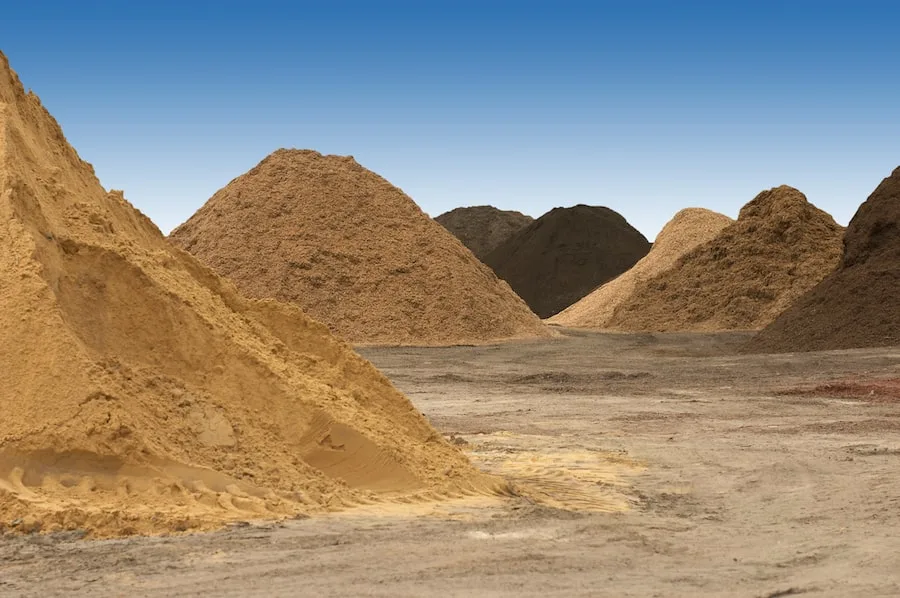
When it comes to fertilizing pepper plants, timing and amount are key. Before you plant the seeds, prepare the soil with a general fertilizer or compost. The fertilizer you choose should complement your soil’s existing nutrient levels. You can use a soil analyzer to figure out your soil’s nutrient levels.
The best time for fertilizing is after the plants produce buds. Fertilizers have 3-number codes on their bags that indicate the amounts of nitrogen, phosphate, and potassium are in the mixture. A 5-10-10 fertilizer is ideal for maximizing pepper yield. It contains an equal amount of potassium and phosphorus and half as much nitrogen.
Don’t use excessive nitrogen in the fertilizer as it can speed up the plants’ growth without assisting in the growth of blossoms, leading to lower yields and even diseases. Nitrogen’s primary role is to help the plants grow, so when the flowering phase starts, the plant doesn’t need much of it. When the plant starts bearing fruit, balance the nitrogen levels with potassium and phosphorus.
If you use a granular fertilizer, apply 1.5 pounds (0.7 kg) per 100 square feet. Be careful not to pour the granular fertilizers on the plants, or you’ll run the risk of burning the leaves. Apply it to the soil around the plant and pour water on it so that it seeps in to the soil perfectly.
If you use liquid fertilizers, don’t spray them on leaves and branches as they get wet and become prone to diseases. Instead, apply the fertilizer to the plant’s base.
Properly Prune the Pepper Plant
When it comes to encouraging bigger yields, pruning is critical. Pepper plants respond well to pruning by growing bigger and producing more peppers. There are different ways of pruning pepper plants, but not all of them lead to better yields.
Here are some of the most effective ways to prune your pepper plants:
Pinching off the First Flowers
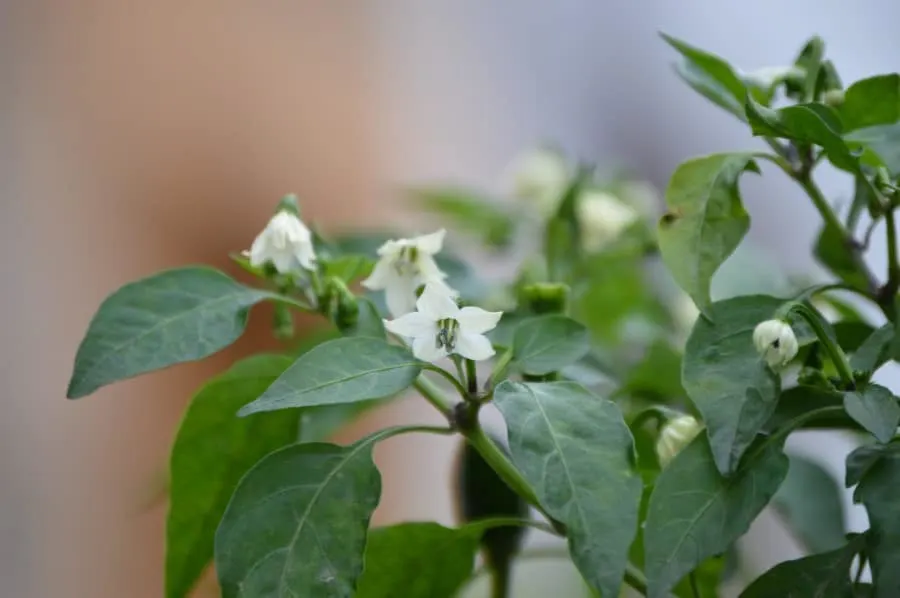
Pinching off the pepper plants’ first buds is a common and effective way to produce higher fruit yields. Don’t be tempted to keep the first few buds you see sprout on your plants.
You may see the first blooms before transplanting the seedlings. This is the best time to prune them since it gives them time and energy to grow their roots and leaves. Plus, instead of having some small fruits early on, you’ll help them grow bigger and more peppers by pinching off those first few flowers.
Thinning
Thinning means getting rid of extra seedlings. You might have chosen to plat multiple seeds during the seedling stage, to ensure that one of them sprouts successfully. If you did this, you may get several seedlings. So, you need to thin them out to provide enough space for one seedling to grow.
Find the one seedling that’s stronger than others and remove the weaker ones. However, avoid pulling them out because it could damage the roots. Just cut the stem off at the base, and then you’re good to go.
Provide Enough Heat and Humidity
As mentioned above, cold weather can really damage your pepper plant. If kept inside, you might consider putting them on heating mats to provide ideal soil temperatures. Seeds are late to sprout when the soil is too cold.
If you’re keeping your pepper plants outdoors, you can help your plant get better yields by using a row cover and plastic mulch. These not only help to provide your pepper plants’ warmth but also suppress weeds and retain moisture.
Harvesting Peppers at the Right Time
Peppers have a long growing season compared to other vegetables. Growing peppers from seeds can take four to five months before it is time to harvest. Harvest the first peppers that are ready to be picked up. You can judge the right time to harvest by the color of the pepper. The best time is when they’re green. By harvesting peppers at the right time, you can encourage your plant to grow more peppers before the season is over.
Closing Thoughts
Pepper plants are one of the easier vegetable plants to grow, and if you take proper care of them, you can be sure to enjoy delicious peppers.
Start by sowing your pepper plant’s seeds indoors early on, about 10 to 12 weeks before the last frost in your region. Provide your plants with enough water, heat, and light, but be careful as overwatering can leave them soggy and kill the plants.
Hardening the plants is also essential to make them ready to grow outside and continue living in direct sunlight, rain, and wind.
Here are Some of my Favorite Gardening Products and Tools
Thank you for reading this article. I hope you found it helpful for growing some new plants in your home or garden. Here are some products I like that I hope you’ll also find helpful. These are affiliate links, and I am compensated for referring traffic. But in all honesty, these are the exact product that I use or recommend to everyone.
Soil: For high-quality soil, I really like Fox Farm Ocean Forest. I do all my growing in containers and this soil has worked great for me. I like how they use nutrient-rich contents like earthworm castings, bat guano, and composted crab and fish.
Fertilizer: Currently I am using a seaweed-based organic fertilizer call Neptunes Harvest. This is a great milder fertilizer option if you want to use something organic. If you want a more powerful fertilizer, I recommend Fox Farm Liquid Nutrient Trio, lots of people have had great growing success with this product.
Pruning Shears: Pruning shears are one of the most useful gardening tools to have because it’s important to prune your plants to keep them healthy. The pruning shears I recommend are the Gonicc 8’’ pruning shears. I like them because they are built sturdy and work both on bigger and smaller plants, so you don’t need to have multiple pruning shears.
spicytrio.com is a participant in the Amazon Services LLC Associates Program, an affiliate advertising program designed to provide a means for sites to earn advertising fees by advertising and linking to Amazon.com. spicytrio.com also participates in affiliate programs with other sites. spicytrio.com is compensated for referring traffic and business to these companies.
